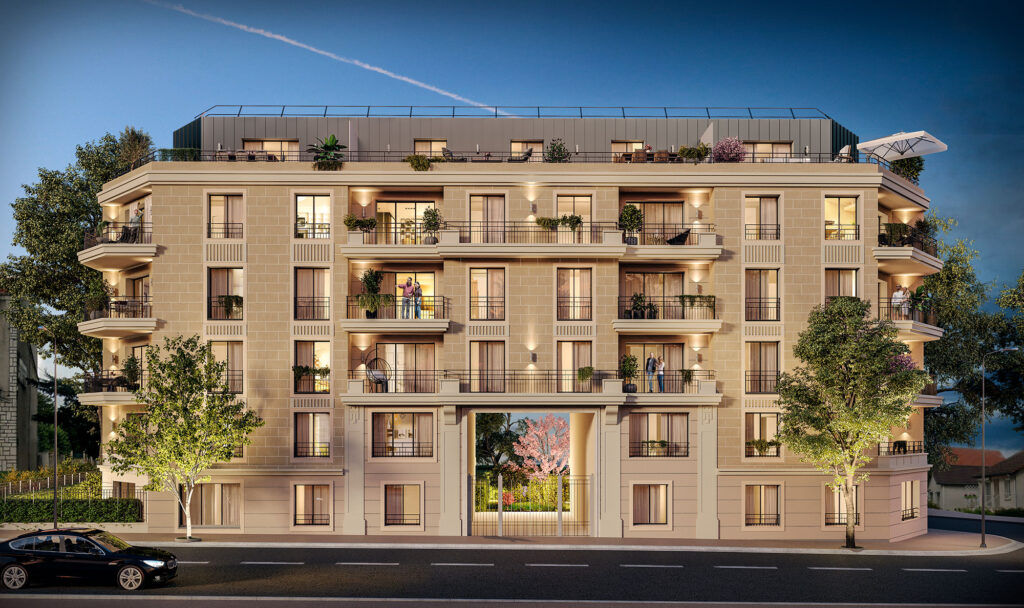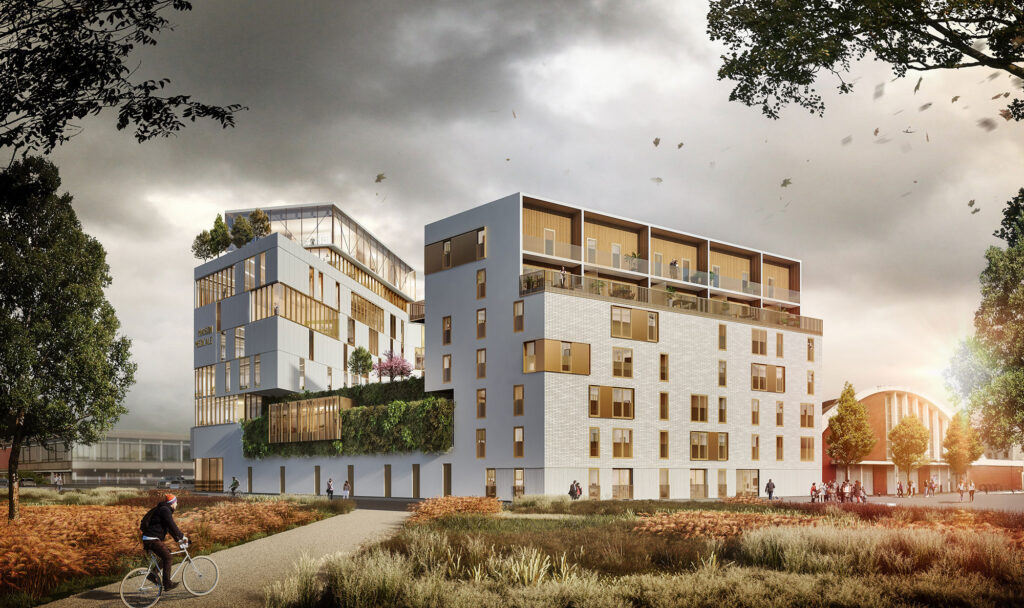3D modeling is a technique for creating 3D models, with numerous applications in the real estate, video game and film industries. In real estate, it is used to visualize built and unbuilt projects realistically.
The 3D renderings obtained by 3D modeling also support real estate professionals in their day-to-day work. Indeed, 3D modeling is integrated into the design, presentation, construction and marketing phases of real estate programs.
3D modeling in real estate project presentation
In the real estate industry, 3D modeling involves the creation or recreation of ultra-realistic, three-dimensional buildings.
3D modeling is mainly used to present real estate projects clearly and effectively. It can be applied to a wide range of real estate development operations, including the presentation of :
3D renderings are accessible to a very wide audience, both professional and private. Prospects can explore the various aspects of a real estate project using 3D renderings obtained from this technology.
These can be 3D images, 3D plans, 3D perspectives, orbital models or virtual tours. The choice of visuals to use depends on your objective.
3D modeling in real estate sales
In real estate sales, 3D modeling is used as a real estate marketing and decision-making tool.
Real estate marketing tool
More than just a presentation tool, 3D modeling is proving to be a formidable real estate marketing tool . The massive adoption of this technology has reinvented the way real estate projects are sold.
A hyper-realistic 3D visual will attract more attention than a simple photograph. So it's essential to include 3D modeling in your real estate marketing strategy, by adding 3D renderings on :
Decision-making tool
Just like product marketing, the success of a real estate project sale depends on the quality of the visuals. If a picture is worth a thousand words, then a hyper-realistic 3D rendering is worth even more. 3D real estate modeling captures the attention of potential buyers at first glance.
You can enhance your renderings with more features to better inform potential buyers, making their decision easier.
3D modeling is an effective selling point for potential buyers. It's often difficult to close a VEFA sale based on a simple layout plan.
However, thanks to the tools associated with 3D modeling, potential buyers can learn about the volumes, design and lighting of a property that doesn't yet exist.
3D modeling in real estate construction and renovation
3D modeling plays an essential role in the construction and renovation of real estate.
New housing construction
3D modeling is an essential tool in the VEFA process. It's crucial to reassure your customers, who are impatiently waiting to discover their new home. 3D tools such as mock-ups enable them to visualize construction progress in real time.
They can also check lot availability. This approach makes the experience more fun and less stressful for future buyers.
What's more, 3D modeling enables advanced personalization. Give customers the opportunity to personalize their future home with a virtual tour. This interactive tool lets you explore the different rooms in the property.
By integrating editing functions, customers can change the floor covering, adjust the layout of a piece of furniture or move a decorative element according to their preferences.
Landscaping work
Whether indoors or outdoors, 3D modeling can be used to simulate interesting layouts.
Interior fittings
3D interior renderings make interior design easier. They integrate concrete elements that help customers to project themselves: furniture layout, floor textures, room colors, materials used.
The 3D model acts as a reference guide for implementing customer requests. These may include the renovation of floor and wall coverings, the layout of lighting fixtures or interior decoration.
Exterior renovation
3D modeling makes it easy to visualize a home's new exterior design. This can include renovating the facade, replacing roofing materials or landscaping the garden. It ensures effective renovation, helping to increase the property's market value.
3D modeling in project design and planning

Before the start of any construction project, 3D modeling contributes to the understanding and accurate assessment of the project.
Communication tool
For construction work to be successful, the various parties involved have to be on the same wavelength. A simple misunderstanding can result in additional costs for rectifying errors.
When designing a new real estate project, 3D modeling facilitates communication between the various participants: real estate developers, architects, engineers, building owners, interior designers and other stakeholders.
3D modeling also facilitates communication with future buyers. The customer can easily understand the spaces thanks to 360° visualization and zooming in on details.
Finally, 3D modeling facilitates dialogue with local authorities to obtain building permits. Presenting your new real estate project to the community demonstrates your commitment to meeting local needs.
When granting a building permit, the town planning authorities generally study the 3D insertion of the program in its actual environment. To give yourself the best chance of success, remember to include as many features as possible to create a pleasant living environment, such as green spaces and aesthetically pleasing materials.
Pre-construction assessment
Thanks to 3D modeling, architects can easily create and evaluate different design options. This enables them to draw up a detailed report of volumes and floor areas, to avoid any construction errors.
The same applies to engineers, who can quickly design concrete reinforcement by placing it correctly in the specified locations.
3D modeling in sustainable development

3D real estate modeling has an ecological dimension, helping to reduce waste and optimize energy efficiency.
Reducing waste
According to McKinsey in an extract from Call for Action, the construction sector is responsible for 25% of global greenhouse gas emissions. It generates 600 million tonnes of annual waste and 14.5% of fine particles in metropolitan areas.
Fortunately, 3D modeling techniques offer solutions for reducing these environmental impacts. Examples include :
Improving energy efficiency
3D modeling tools also improve the energy efficiency of a home under construction. BIM software can, for example, automatically detect conflicts and carry out energy performance measurements.
3D modeling of an unbuilt real estate project can be used to assess energy requirements and building capacities. It can also be used to simulate the energy performance of buildings, in order to estimate their environmental impact.
This data helps builders determine the best solution for improving the energy efficiency of the home under construction.
3D modeling in real estate project management
Ultimately, 3D modeling is used to optimize the overall management of your real estate projects. Each 3D tool offers its own advantages at every stage of the process:
Investing in 3D modeling is therefore essential for any construction or real estate sales project.
Entrust us with the 3D modeling of your real estate projects
CTA








